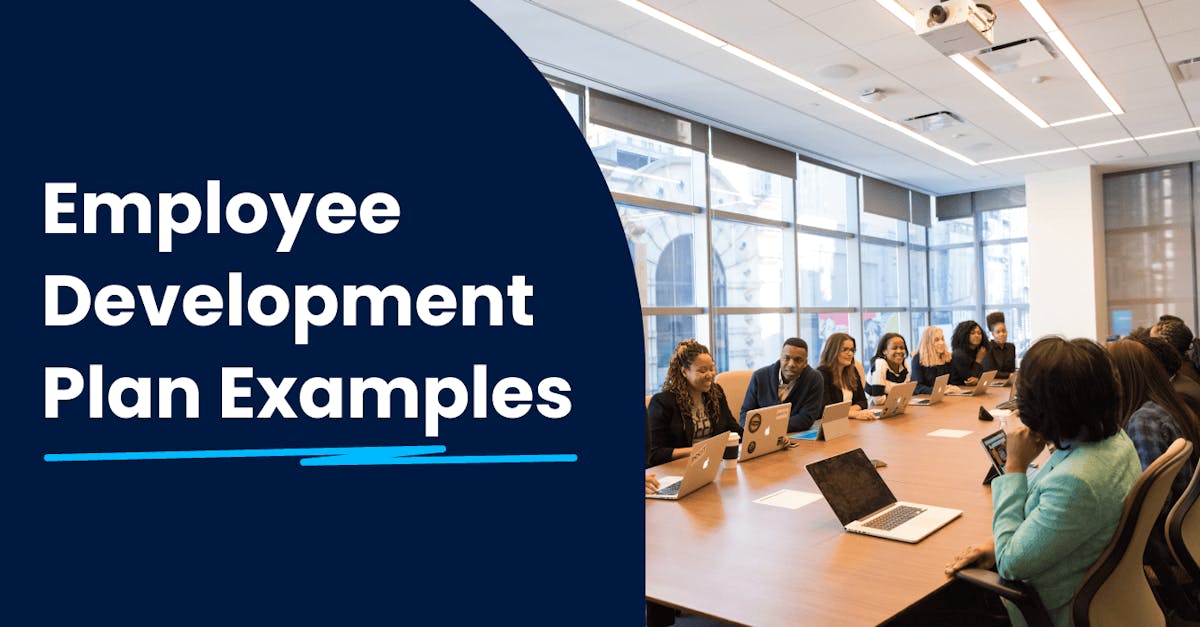5 Employee Development Plan Examples

Employee development plans are a great way to approach professional growth in an organized manner. Employees will be more engaged and effective when they are actively learning and developing in their field. In this article, you’ll be introduced to different employee development plan examples that you can apply to your business to improve employee engagement and performance.
1. Skill gap analysis
Skill gap analysis can help you identify what areas need improvement to boost the performance of your employees. Once you have a good understanding of what your teams need in terms of skills, knowledge, and company support, you can start preparing accordingly. This type of team development plan could include setting up more performance reviews, mentorship programs, or training sessions.

If you’re looking for a blended company training software that can make addressing skill and knowledge gaps easier, then EdApp is the perfect solution. It offers a variety of tools, such as a built-in content creator tool, user management, and integrations. It even has a free course library that offers microlearning programs like management training courses, safety training courses, power tool training courses, and so much more. This example of development plan for employees also delivers video-based, in-person, instructor-led, or online training with its virtual classroom. To support your in-person training, you can count on its features like group training, practical assessments, and learner portal features.

To help you analyze your employees’ training performance, EdApp has analytics dashboards and custom reports. Track every training interaction automatically to see how learners are progressing through courses, and get the data you need when you need it. Similarly, re-engage learners with lower performance with the built-in notification system for higher course completion rates.
Join EdApp for free and implement this blended learning solution into your employee development plan example today.
2. Performance-based plan
Performance-based plan is an employee development plans example that uses the logic of a school report card. Students work hard every semester to at least get passing grades or enter the Dean’s List for extra privileges. Not only is this a mid-term goal with it refreshing every few months, but it’s also an achievable and visible goal. Similarly, employees in a workplace setting can be more focused when they are working towards quarterly goals for their sample staff development plan.

But, success isn’t always quantifiable. It’s simple to set and work toward a numerical goal since the outcomes of hitting the target are either yes or no, but it wouldn’t be the whole picture. When using a performance-based employee development plan, consider taking into account other aspects of your employees’ experiences, like professional growth and motivation.

Applying this type of thinking leads to the feedforward approach, where feedback focuses on positive impact and future solutions rather than negative performance and past mistakes. If you want to learn more about giving and receiving feedback, then EdApp has a free microlearning course on the topic. Check it out here and easily complete the course in minutes.
3. Management by objectives
Management by objectives is another employee development plan templates example that’s similar to the performance-based plan but depends on short-term goals. Instead of following goals given by management, employees decide their own milestones. Those milestones then contribute toward the overall business goals.

If you prefer a more proactive approach than a reactive one in terms of employee development, then this is the perfect method for you and your team. Instead of looking back and reviewing performance backward, employees can update their goals as they see fit and as time goes on. Let your employees constantly self-evaluate themselves and see as their performance improves along the way. You can even lend them a hand by providing extra training and learning resources.
4. Succession plan
Succession planning is a common employee growth plan example for companies to already have a career ladder set. With succession planning, employees are assigned a position on the ladder and progress through time toward a promotion or a more senior position. Mentorship programs are perfectly suited to this longer-term kind of planning.

The choice of mentoring can be beneficial for the personal growth of both the mentor and mentee. Mentors often have more experience in their fields and can offer guidance on how they arrived at their positions. If you prefer a more hands-on approach to the growth of your employees, then you should consider putting this employee development plan example into action.
5. Ad-hoc improvement plan
This strategy and area for employee development plan examples is highly individualized and works best with single employees rather than with teams. It’s built on a mentoring program, similar to the succession plan, but puts more of an emphasis on the needs of the mentee.

When it comes to this kind of staff development, timing is crucial. When an employee displays an interest in learning more, it’s important to act right away. If you wait too long, they may lose interest in bettering their skills and knowledge. Even though this employee development plan example is less formal, it’s perfect for workers who want to develop specific talents that will advance their careers.
Author
Darcy Dario
Darcy is a learning expert at EdApp, a mobile-based training platform that helps businesses bring their training solutions to the next level with democratized learning. She has a background in content writing and specializes in eLearning and global communications. When she’s not writing SEO-optimized content, she’s trying to finish her video game backlog.
